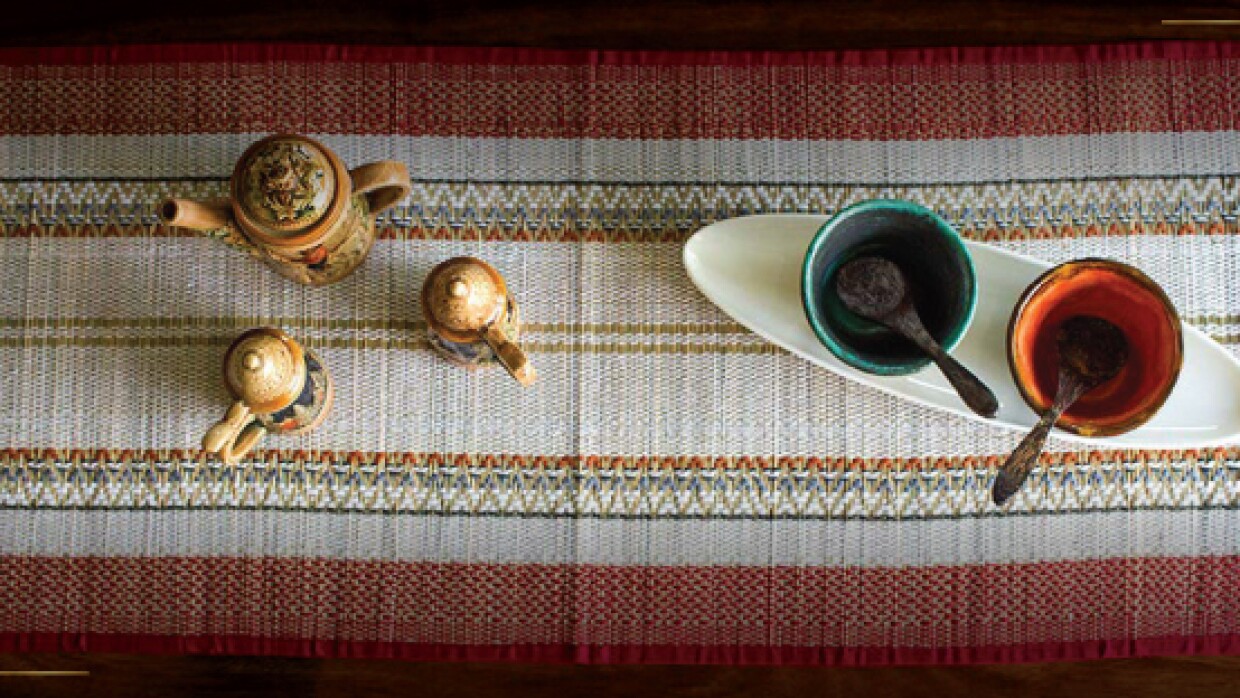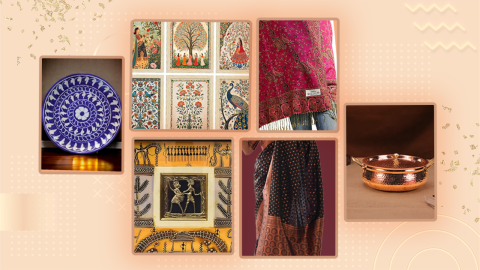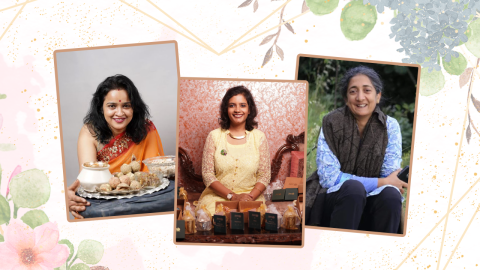“Madam, we are in demand now. Big business houses have suddenly become interested in our produce., Cities have apparently caught the ‘plastic phobia’ and sustainability is the latest trend. As for us, bamboo has been our life line for ages, and now we are glad to share it across the country,” says Harideb, a local Bamboo craftsman from Assam who is busy preparing bulk orders with bamboo straws, boxes and other utility products, which has seen surging demand in recent years owing to massive global plastic pollution.
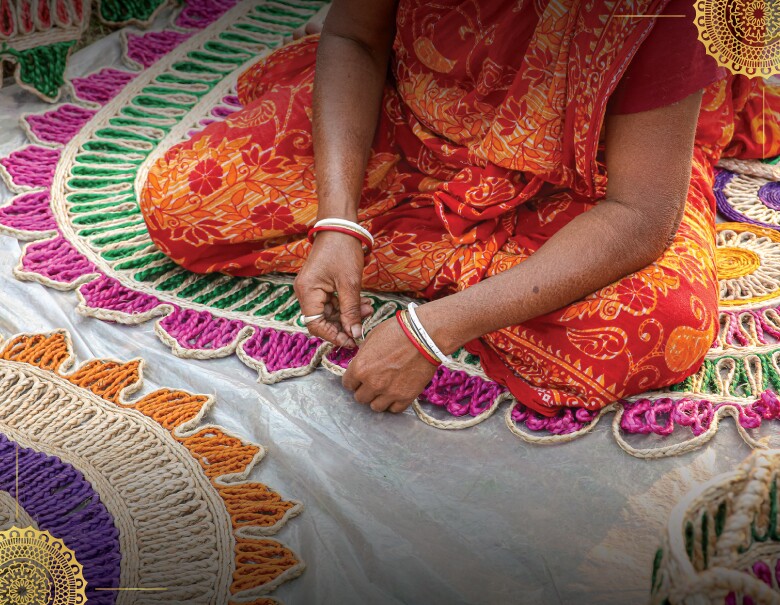
India’s Diverse Crafts Landscape
“Our most valuable and most instructive materials in the history of man are treasured up in India,” wrote Mark Twain, the famous author. From Guwahati to Gandhinagar, and from Kashmir to Kanyakumari, each region has its own distinct culture, and almost every state has carved its own cultural landscape over the centuries. There is hardly any other culture in the world as varied and unique as India’s; and from such diversity arises a plenitude of heritage crafts and traditions that echo Twain’s declaration. Of India’s many handmade marvels, today we will trace the journey of natural fibres.

Traditionally, all natural fibres were used for hyperlocal needs and rarely found space in big city markets. But in recent years, the awareness of eco-friendly products made from natural fibres, with their versatility and strength, have caught the interest of urban consumers.
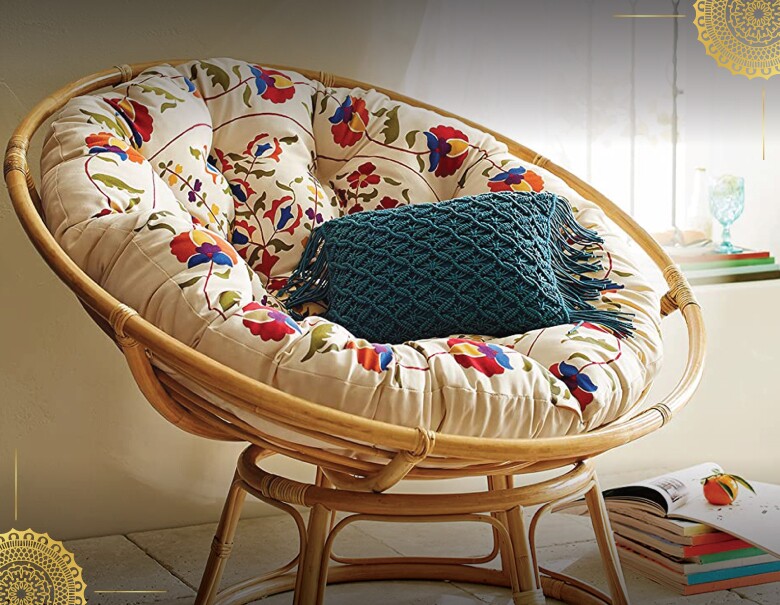
Bamboo Crafts from the North East
Down the ages, almost every household in North East India has practiced bamboo crafts for their daily needs. Villagers weaved rattan chairs, cut and peeled bamboo to shape baskets and hats, and used bamboo sieves to dry grains. To this day, many traditional homes are thatched with bamboo roofs. Moreover, the largely indigenous population with their liberal outlooks in Assam and other North Eastern states do not assign any particular caste or community to this traditional craft, unlike other parts of the country. Instead, the craft is practiced by all, particularly by local farmers.
Although local markets were flooded with plastic products till recently, the outlook is slowly, but surely changing. Bamboo has become a showcase for collaborations, empowering local communities to evolve their craft into usable items and continue their patronage of what they call ‘natural gold’.
Despite cane and bamboo products being such widespread handicrafts, they still need a lot of love and patronage as their share in export trade is still negligible. State run Government Emporia are well placed to popularise artistic bamboo and cane products beyond the North Eastern states.
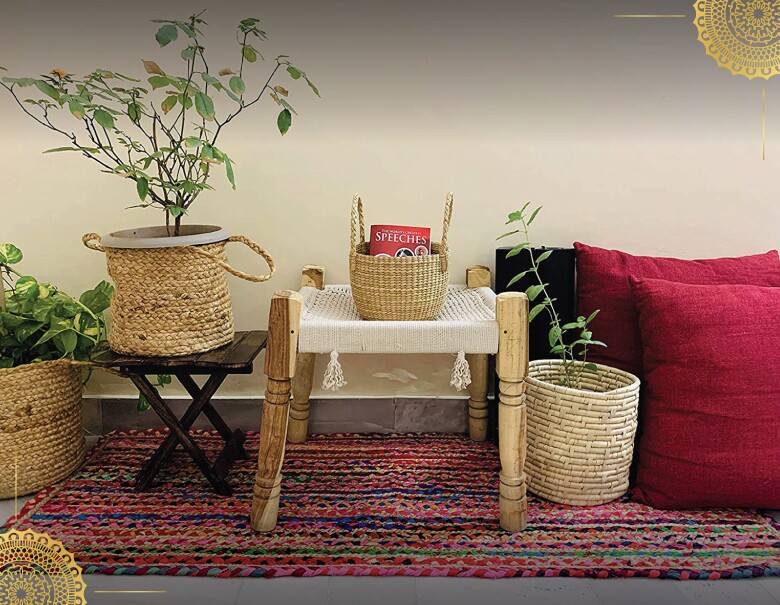
Farmer’s friendly fiber- Jute
Popularly called the Golden Fibre, jute is one of the most versatile natural fibres grown in the Eastern belt of India widely. The plant, when cut, is dipped in water to separate the fibre, which is then dried for further colouring and treating to make the products. Initially Jute was used to make gunny bags to store rice, pulses etc — increasingly, the appeal of jute is growing as a sustainable fabric that acquires forms like home utility items, décor pieces, even jewellery and chandeliers. The farmers are increasingly harvesting jute as it has an upward demand, easy growth, and fair return of their labour.

Coir from Kerala
The tropical paradise of swaying coconut palms, sandy beaches and backwaters beckon us to the coastal state of Kerala. Kerala literally means the ‘Land of Coconut Trees’, owing its name to this popular, hard-shelled fruit. No wonder that coconuts find their place in the state’s cuisine, religious ceremonies and personal care, with the coir industry forming a major part of Kerala’s landscape. Mostly concentrated around Alappuzha, or Alleppey, the coir industry today employs about a million men and women who produce beautifully crafted products like ropes, baskets, floor coverings, doormats, lamps and scrubbers. The best features of this handmade craft are its durable and affordable products that are widely used across seasons and geographies.

Shell Craft from Goa
The gorgeous coastline of Goa takes a halt as you turn towards Fontainhas, retracing your steps to the first arrival of Portuguese traders to the land. Did you know that Fontainhas is not just home to heritage architecture dating back to the colonial Portuguese era, but also houses the largest Latin quarters in the whole of Asia? That was when the lovely translucent, mother of pearl shells began to be used in making window shutters for homes. They can still be seen in old colonial mansions and churches. Down the years, this seashell craft evolved into decorative and utility artefacts. Seashells from the Arabian Sea are sorted and mixed with plastic, wood, horn or brass to make beautiful jewellery boxes and other decorative shell artefacts.

Grass Work from Odisha, Bihar & Jharkhand
Some 159 km from Patna, a local haat in Sursand Village is lined with sellers of jaggery, grains and the region’s gold or Sikki grass. A fistful costs about Rs. 1.50. Artefacts made from this natural fibre is known as Sikki or Moonj craft in Bihar, Bema craft in Odisha and the Ramacham grass craft in Kerala. They all make use of local grass to weave beautiful products.
The grass is cut during the Monsoon month of Saavan (July–August) and dyed in different colours to make baskets, boxes and bridal gifts. The craft continues to see 80% consumption in local markets and needs our support to appreciate and share its unique story.

To a Better Future
With sustainability becoming a pressing social and ecological concern across the globe, consumers like us need to lead the change. This festive season, let us look inwards to our indigenous heritage of natural fibres for gifting solutions that are handmade and inspired from ‘mitti se mitti tak’ (from earth to earth).
Also read


